“Bourbon whiskey”. When you hear that name many thoughts come to mind. From first class passengers aboard the Titanic enjoying it as an after-dinner drink to the cast of AMC’s Mad Men guzzling Old Fashions like bottled water, one thing is certain; it is, all things considered, a gentleman’s drink.
An Ambiguous History
The history of bourbon whiskey dates back over 200 years to the dawn of the 18th century with much speculation, contradiction and old wives tales charting its course throughout history. While it’s tough to determine exactly who invented the first bottle of this southern nectar, what is certain is that some of America’s finest purveyors of whiskey began perfecting it.
When Evan Williams opened the first commercial distillery in 1783, making whiskey out of corn on the banks of the Ohio River in Louisville, he unbeknownst to him, earned himself a major accolade and a place amongst the greats in the American history books.
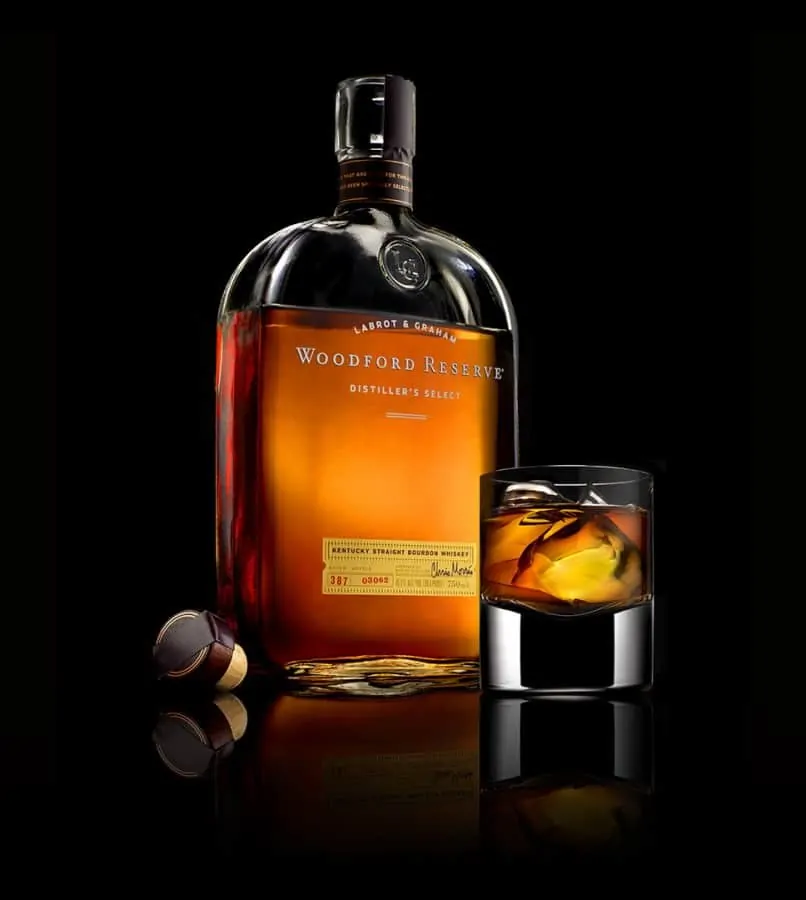
While many of his colleagues on the Louisville Board of Trustees devoured his whiskey, a few aristocrats found the potent beverage to be less than appealing.
Years later, legend has it that a man of the cloth named Elijah Craig, a whiskey distiller known today as “The Father of Bourbon”, discovered that the cheapest way to clean a whiskey barrel was by charring the inside of it. In the blistering months of July and August as farmers began harvesting their corn, the casks sat awaiting stronger tides before being shipped to the bustling ports of New Orleans. During the trip that could take anywhere from weeks to months, the whiskey sitting inside those burned white-oak barrels smoothed that harsh spirit, extracting its tannic and vanillins, turning it into a warm amber color that in turn would result in a rich, elegant and smooth taste with a resplendent aromatic finish.
As this process caught on, distilleries across America began opening up shop and amending a method of whiskey manufacturing that had previously soured the discerning palates of scholars and aristocrats, much like the ones Evan Williams had encountered.
By 1964, Congress had recognized bourbon as a distinctly American drink placing it into a class of its own. Further along the line, many distilleries in the heart of Bourbon County felt almost aggrieved by the fact that so many smaller companies were making their own versions of “bourbon” and that’s how Kentucky Bourbon was born.
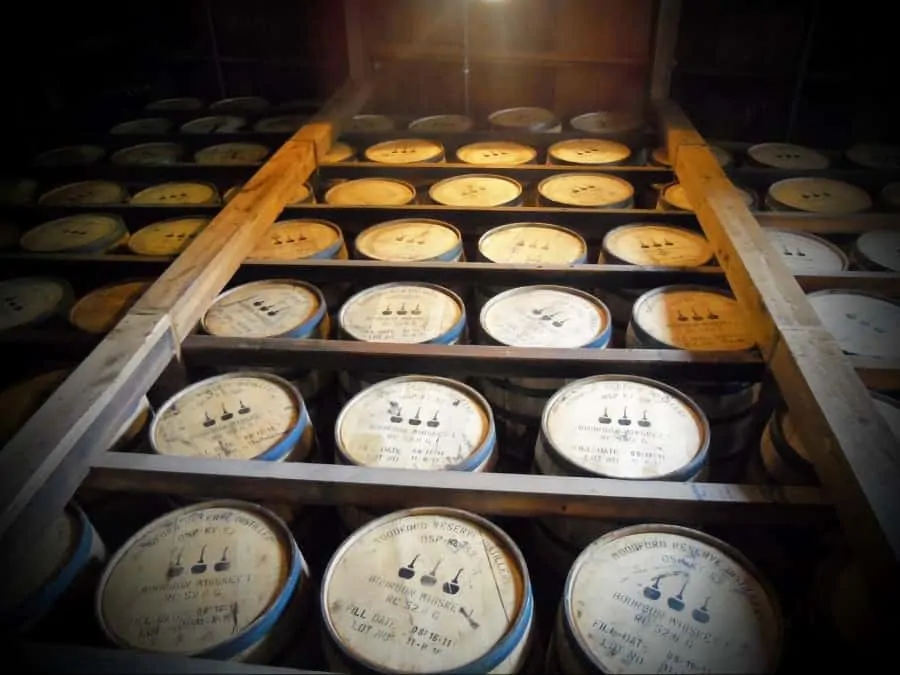
The Bare Necessities
- made from a grain mixture that is at least 51% corn;
- aged in new, charred white-oak barrels;
- distilled to no more than 160 proof (80% alcohol by volume);
- entered into the barrel for aging at no more than 125 proof (62.5% alcohol by volume);
- aged in the barrel for at least 24 months (if aged under 4 years, it must be labelled as such on the bottle);
- bottled (like other whiskeys) at 80 proof or more (40% alcohol by volume).
These are just a sampling of regulatory guidelines that distilleries must adhere to in order to label their whiskey as “Bourbon”.
Aged for a bare minimum of two years, bourbon has no artificial coloring, contains absolutely no flavoring and is a single spirit meaning no other alcohol has touched that glorious amber whiskey we call Kentucky Bourbon. For those manufactures wishing to label their bottles as “Straight Bourbon”, a minimum of four years aging is required and like scotch, the year of the youngest whiskey present must be clearly posted on the bottle.
From the ever-popular Jim Beam and Woodford Reserve to the small batch bottles such as Bookers and Blanton’s, bourbon is proof of America’s tenacity in the continual pursuit of perfection.
An Intriguing Process
With a minimum of 51% of all bourbon made of corn, it allows distillers a certain amount of flexibility to be creative. By concocting what’s referred to as a “Mash” of wheat, rye or barley, the manufacturer grinds the grain and mixes it with water. Then, by adding mash from older batches, it creates the perfect pH balance making what is commonly known today as “Sour Mash”.
After grinding, mixing and perfecting the mash bill, yeast is introduced and the mash begins to ferment. Now referred to as the “Wash”, it is distilled between 65 and 85% alcohol.
The crystal clear whiskey is then transferred to the charred white oak barrels for aging, which causes it to gain its delicate amber hue. As the sugars in the wood caramelize, it begins to introduce the flavour of bourbon. Evaporating and oxidizing, the whiskey matures like a fine wine, gaining warmer colors and flavor the longer it rests. Finally, the bourbon is withdrawn, diluted with water and bottled to at least 80 proof (40% abv) up to a maximum of 125.
Interestingly enough, 20% of the bourbon is still in the barrel, contained deep inside the seared wood. However, because bourbon can only be made in new barrels, these are often sold or auctioned off to some of the world’s finest scotch distilleries.
While bourbon can technically be made anywhere within the continental United States, experts suggest that up to 95% of all bourbon is to this day produced in Kentucky, a location which you must distill in to utilize the name “Kentucky Bourbon”.
Cheers!
The base for such quintessential cocktails as the Old Fashioned, one of America’s oldest cocktails and of course, the ambrosial Manhattan, bourbon will forever be a front-running staple in our local watering holes.
Straight, on the rocks, or mixed in a cocktail, bourbon whiskey is a gentleman’s standard, a mark if you will of sophistication and class in an ever growing market saturated with dessert flavoured vodkas, fruit infused coolers and low calorie beers.
But for the true gentleman and connoisseur, the kind of man who keeps a decanter in his office, a stocked bar at home and knows his neighborhood bartender on a first name basis; bourbon has in essence been conscripted to remain the drink of choice. If you haven’t already done so, take a look at our bar tool essentials before mixing your drink.
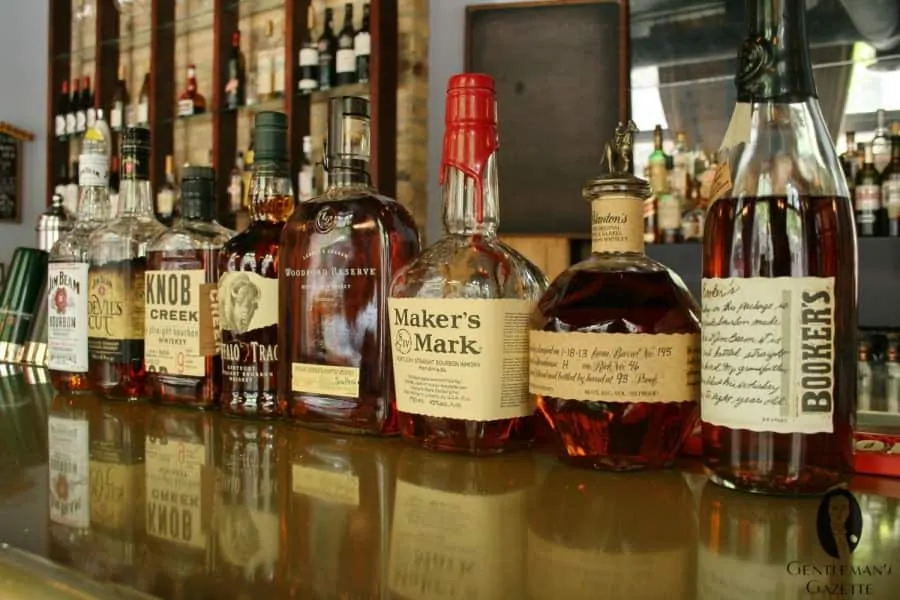
Old Fashioned Recipe
– 1 ½ ounces of your favorite bourbon
– 2 dashes of angostura bitters
– 1 sugar cube
– A few dashes of water
- Place sugar cube in an old fashioned glass and saturate with bitters, add a dash of plain water.
- Muddle until dissolved.
- Fill the glass with two ice cubes (no more or it will dilute your cocktail).
- Add your favorite bourbon.
- Garnish with orange slice and a cocktail cherry.
- Enjoy.
The Manhattan
– 1 ½ ounces of your favorite bourbon
– 1 ounce of sweet red vermouth
– 1 dash of angostura bitters
– 1 maraschino cherry
- Stir bourbon, vermouth and bitters over ice and strain into a chilled glass.
- Garnish with cherry.
- Serve straight up.
- Enjoy.
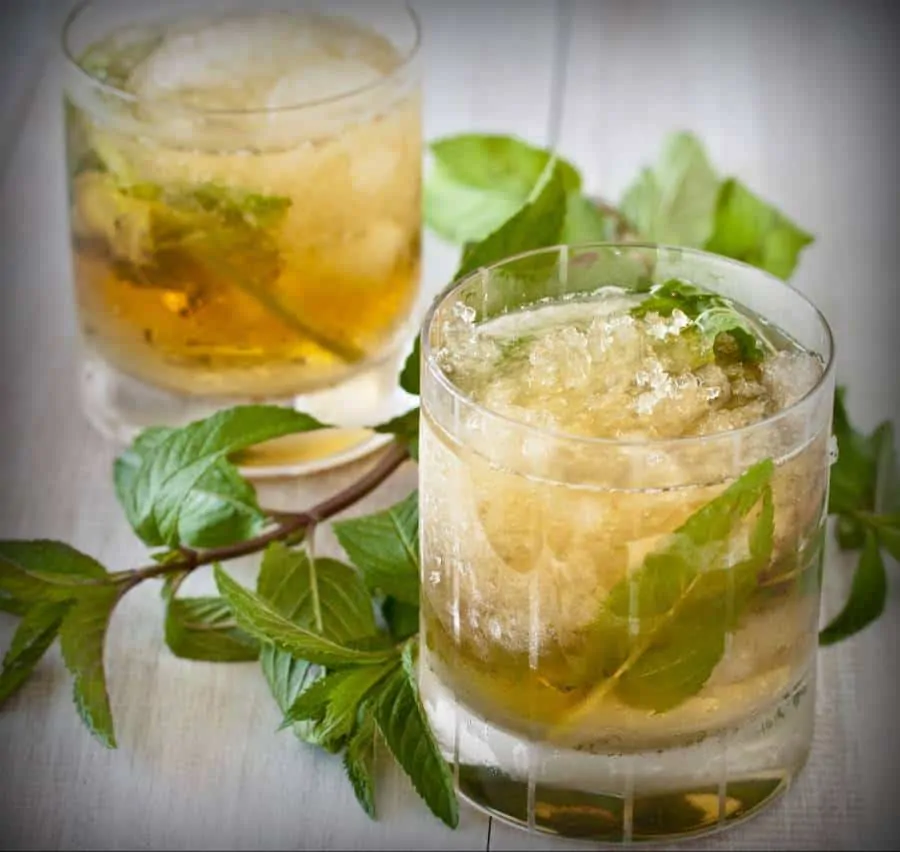
Mint Julep
– 3 ounces of your favorite bourbon
– 4 or 5 sprigs of fresh mint leaves
– Granulated sugar, to taste
- Put mint, sugar and a small amount of bourbon into the bottom of a mixing glass.
- Gently muddle the mint and sugar, and then let it stand to allow the muddled leaves to release their natural flavor.
- Strain and pour into a julep cup, rotating to coat the sides.
- Fill with ice and add the rest of the bourbon.
- Garnish with a lightly slapped mint sprig.
- Enjoy.
The Effervescent Gent (Our Take on the Classic Old Fashioned)
– 1 ½ ounces of your favorite bourbon
– 1 dash of angostura bitters
– 1 dash of orange bitters
– 1 sugar cube
– A few dashes of seltzer water
– 1 orange slice
– 1 maraschino cherry
- Place sugar cube in an old fashioned glass and saturate with bitters, add a dash of seltzer water.
- Muddle until dissolved.
- Fill the glass with two ice cubes.
- Add your favorite bourbon (we recommend Woodford Reserve)
- Garnish with orange slice and a maraschino cherry.
- Enjoy.

A Bottle for Every Budget
Ranging in price from a meager $30 upwards of thousands, there really is a bottle of bourbon to compliment every man’s check book.
From the globally popular Jim Beam white label to rare aged perfections sampled by the likes of our forefathers, whether you’re looking for a nightly after-dinner drink or a special celebration of the finer things in life, we at the Gentleman’s Gazette, are here to help show you the way with a few of our favorite bourbon whiskeys.
Jim Beam White Label
Without question, Jim Beam is one of the oldest and most popular bourbons available today. It offers a sweet nose with light aromas of vanilla and hay, a gentle caress of corn with a delicate sweetness. The palate provides a quality body with hints of toasted American oak and dashes of vanilla and cream. With a dose of spice and pepper it has a acetone note that finishes again with toasty notes of seared oak, resin and a touch of sweetness.
Jim Beam Devil’s Cut
By withdrawing 90 proof Jim Beam bourbon and extracting the bourbon from the wood and blending them together, you get an extravagantly woody nose with strong gusts of white oak mixed with a punch of vanilla and spice. Once it hits your palate you can almost feel the warmth of the devil himself as the vanilla dances on your tongue, instantly filling your senses with rich strong woods and pepper. It finishes as oaky as it begins with a final burst of spice and a shot of vanilla. This is not for the faint of heart.
Maker’s Mark
As a premium bourbon, the nose begins with hints of fruit and honey. A delicate aroma of spice blends nicely with draws of malmsey as the toasted oak and further touches of fresh fruit finish the nose. The palate is a shock to your senses. It’s rich and full bodied with notes of spice, barley and rye. As you come down from the shock you’re greeted with the pleasantry of vanilla and butterscotch. A rather sweet finish, the butterscotch mixes nicely to warm your soul as the toasted oak invigorates your senses.
Woodford Reserve
The nose is as creamy as one could imagine with hints of honey and a perfect blend of spice. On a second nose you’ll smell the fragrance of fresh leather, a touch of pure and immensely satisfying cocoa, beautiful breaths of smoke and a slightly hidden but remarkably penetrating burst of toasted American oak. The nose is finished with a satisfying scent of vanilla cream and a hint of butterscotch. The palate is just as wondrous. Strong notes of espresso couple together with winter spice, fresh ginger and a burst of rye. Almond oil and cereal sweetness are finished off with spicy rum and the taste of fresh cut oak. A long and mature finish leaves you with a sense of warmth as you taste the cereal sweetness followed by a little toasted oak.
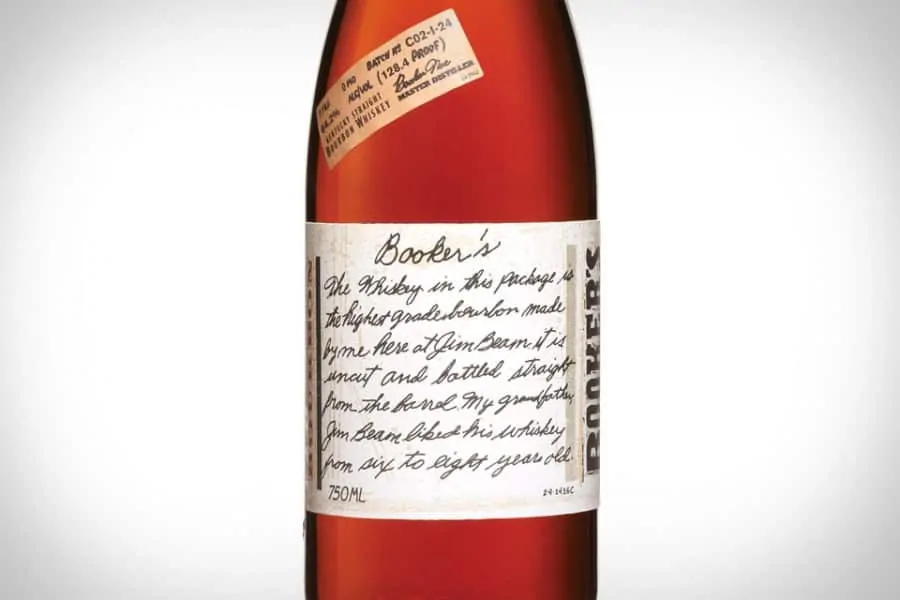
Booker’s
A small batch bourbon from the Jim Beam distillery, Booker’s is an premium whiskey made with the highest standards and ingredients. Unlike its competitors, Booker’s is one of the only uncut and unfiltered bourbons on the market today. It’s nose is intense with strong hints of toasted oak, vanilla and smoked charcoal. The palate is even stronger as you begin tasting seared tobacco, leathers and tannin mixed with fruit. As the finish hits you, you’ll experience a clean, intense feeling deep in your abdomen with the aftertaste of fresh fruit, smoke and oak.
Blanton’s
A premium whisky, Blanton’s bite is as sharp as they come. As a single barrel whiskey, the nose begins with a deep sense of purpose. It satisfies from the moment it hits your senses as you begin to smell the dried fruits, intense spice and hints of orange peel and vanilla. The palate is full bodied, yet subtle. It wrestles against you with strong gusts of burnt sugar, caramel, almond oil and cloves. The finish is like a calm sea after the storm. Balanced with notes of toasted oak, pepper and citrus, it finishes you with a slight sweetness that is decidedly vanilla.
Buffalo Trace
As the world’s most award winning bourbon, Buffalo Trace is a safe bet for any gentleman. With a nose that’s rich and intense, it somehow remains soft as you smell hints of toffee, vanilla and candied fruit. The palate is equal in the sense that there are no other surprises. The toffee remains in the lead followed by luscious waves of fruit, oak and caramel. As you hit the finish, you’re greeted with a smooth and delicate taste that lingers and slowly drifts away as it warms your belly.
Knob Creek
Another success from Jim Beam, Knob Creek is often defined as a pure prohibition era bourbon. With a nose that’s trickled with toasted nuts, oak and leathers, the palate greets you in a matter-of-fact way with hints of charred oak, sweet vanilla, and fresh cut fruit. The finish is almost melt in your mouth and can only be described as glowing with flavor. It’s a mixture of sweet and spice with tannins, dried fruit, honey and white oak. A double gold winner at the 2012 San Francisco Spirits Competition, it’s a safe bet this will become your after-dinner drink. Click here to watch a series about Knob Creek.
Conclusion
Bourbon is a tradition in many homes and stomping grounds. A toast by the fire on a cold winter night or an afternoon beverage with friends at the pub, it has officially been earmarked as “America’s Native Spirit”.
Today, Bourbon is a billion dollar industry that unlike most continues to showcase quality craftsmanship. A beverage for the most discerning gentleman, it is all things considered, a continual pursuit of perfection, rich in history and steeped in tradition.
What is your favorite Whiskey? or do you prefer Scotch?
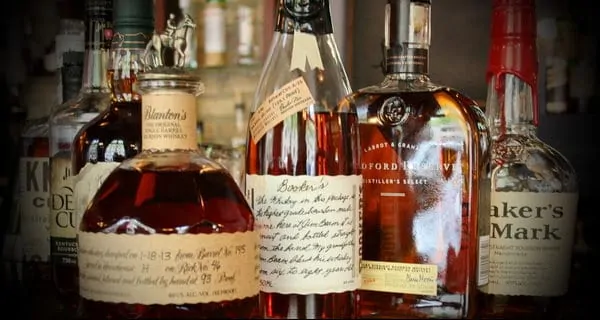
Very informative article. Thank you.
Though technically “Bourbon” can be made anywhere around the world as it is simply Whiskey made out of corn.
The only distinct North American “ingredients” are Quercus alba, the American White Oak, which is used for the barrels and the charring process that was meant to introduce flavours that were lacking due to ingredients of traditional Whiskey recipes being unavailable, e.g. peat.
Corn itself made its way from Mexico to Europe and was then introduce to North America and the whole process of fermentation and destillation dates back two milleniums. The Irish and Scots then perfectioned the whole process and introduced the ageing in barrels for further refinement.
Yet in the end, I would say, this is exactly what makes American bourbon quintessentially American. Taking an old tradition and turning it into something new with the help of ingenuity and business acumen.
I never thought about it that way but your words bear some truth…
While my favorite whiskeys are Scotch and Irish I like bourbon and Canadian very much. They are such a family of brown spirits. There use to be a hotel near where I worked that offered a tasting of bourbons or scotch, from that and my own sampling I have a real good idea of how flavorful these can be. Currently I drink mostly Scotch and give my choice it would be peaty single malts or single casks, however a heart condition and finances have limited what I can actually afford or consume. A pity.
FWIW, Rye is the original, and traditional, whiskey base of both an Old Fashioned and, especially, a Manhattan. The use of bourbon as the base liquor is a relatively new phenomenon.
When I went to bartending school in the 70s we were taught that a Manhattan or an Old Fashioned, indeed any drink in which the recipe simply calls for whiskey, starts with rye.
As an example I adduce no less an authority on cocktails than Cole Porter. Please recall the last lines of “Make It Another Old-Fashioned, Please.”
“Leave out the cherry,
“Leave out the orange,
“Leave out the bitters,
“Just make it a straight rye.”
Here is the great Ethel Merman from the 1965 BBC special “An Evening with Ethel Merman.
http://youtu.be/5PtxEEwk4O0
Thanks for pointing that out! Now please tell me: how does a bartender gets to make fashion jewelry?
Nice article. There are some very decent bourbons out there but in the UK most people just think of Jack Daniels when it comes to American whiskey.
Good traditional time honoured cocktails, as well. Thankfully, the classic cocktails are back in fashion and odd sparkler sprouting ones not so omnipresent as they seemed when I was young. I’m not sure that the Effervescent Gent really qualifies as a separate cocktail from the Old Fashioned: the use of orange bitters is traditional and the addition of soda a well established variant (in the same way that Daisy cocktails can be made with or without soda). Still, nice to see a variation on the standard.
I know it is technically sour mash bourbon, but I cannot believe you would leave Jack Daniel’s out of this article. A bourbon drinker of over thirty years, I keep goiong back to its unique raspy taste. It may be more pleblian than Maker’s, Knob Creek, et. al., but I find it consistently pleases my palette.
Of course, there are so many brands and each one has their favorite but this piece is already more than 2200 words long…
Lately, I have been enjoying Woodford Reserve with a bit of ice – I like the smoothness of it.
As a Scot, I naturally prefer Scotch, but we are greatly indebted to the American bourbon industry for supplying us with so many fine casks, without which Scotch would be a very different (and rather more expensive) affair. Sadly, truly interesting bourbons are quite hard to find on this side of the Pond. Of the ones you’ve listed here, I think I’ve only seen the two Jim Beams and Maker’s Mark, but I shall certainly be on the lookout for the others.
You can purchase Woodford Reserve in Waitrose for under £30
Yes, try the Woodford Reserve, which is one of my favorites.
Elliot Nesterman is correct in his comments above. You should NOT make a Manhattan or an Old Fashioned with Bourbon. Bourbon is much too sweet for either of those cocktails. In both cases you’re adding sweet ingredients to the whiskey – so you don’t want to start with a sweet whiskey. Straight rye is the only true and virtuous whiskey to use in either of those cocktails.
I think you should try both and then decide what you like more. No matter whether it’s classic of correct – with something like a cocktail that is just about taste, let your palate be the ultimate judge but it is always good to know what the historic roots are, because sometimes tastes have to be acquired.
I just came across the Website Go Bourbon. Has anyone here ever heard of them? Looks quite interesting!
I’ve enjoyed Woodford, Buffalo Trace, Jefferson’s Pres. 18y, Russell’s Reserve and othersr, all excellent. Lately, eagle Rare had garnered my attention as it has an excellent nose, hits mid palate wonderfully and I enjoy the finish. Excellent flavor for an affordable bourbon and I definitely prefer it to Makers, Makers 46 and Blanton’s.
Professional 2013 MLB Iphone Case wholesale center. A good place to shop for cheap Dallas MLB Iphone Case.
“Corn itself made its way from Mexico to Europe and was then introduce to North America and the whole process of fermentation and destillation dates back two milleniums.”
Errant nonsense.
“Corn” in America means maize to Europeans. There was no transfer of maize from Mexico (acutally, maize became a crop food in S. America) to Europe and then back “to North America [sic]”. BTW, Mexico is part of North America and maize was grown by Indian and English colonist alike in what is now the US.
Pardon me? The entire assertion hinges on the matter of recreating Whiskey. So of course the use of maize for this process made its way via the European continent, in terms of the underlying thought process, to North America.
Besides, maize was a crop originating from Mesoamerica, a cultural and geographical construct comprised of the central states of Middle America, which in physiographical terms, reach from Mexico to Venezuela and Colombia.
Oh, and another thing, the Portuguese had introduced maize, which they took from the Middle American colonies, to the African continent one century before the first English settlers landed on the North American shores, so the knowledge of maize did indeed travel “from Mexico to Europe and was then introduce to North America”, as far as Europeans are concerned. The English settlers did not arrive without the knowledge of what maize was.
So the next time, do me a favor and don’t call out “errant nonsense” before thinking.
Loook – you treat Mexico as if it were different from North America and you suggest that “corn” was introduced from Mexico tp Europe and then to North America. Either correct your post of get a better grip of English.
English colonists found seed corn at Plymouth.
Your post, again, is errant nonsense.
I am sorry, but if you can’t comprehend a basic line of thought there is no need to further prolong this conversation.
Thanks for the article. I use to drink scotch but I tried some really nice Bourbon and it worth it.
Regards,